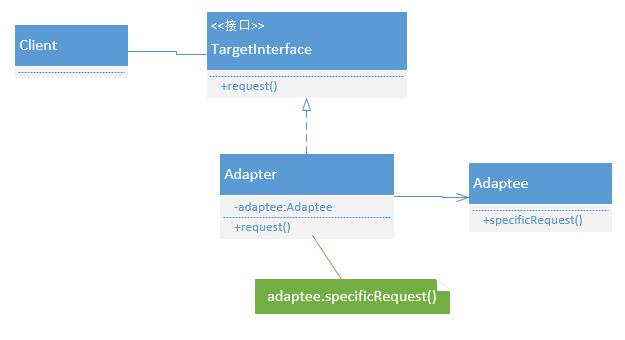适配器模式
Posted _路上
tags:
篇首语:本文由小常识网(cha138.com)小编为大家整理,主要介绍了适配器模式相关的知识,希望对你有一定的参考价值。
定义
将一个类的接口,转换为客户期望的另一个接口,而不需要修改源码。
使用
适配器模式可分为类适配器与对象适配器,类适配器一般需要多重继承,Java 并不支持,我们暂不讨论。

其中,TargetInterface为客户需要的接口,Adaptee为需要适配的对象,Adapter为适配器,其实现需要的接口,并将要适配的对象包装起来,在调用目标接口的方法时,实际执行Adaptee对象的相应方法。
代码(Java)
// 要进行适配的类 public class Adaptee { public void specificRequest() { System.out.println("This is Adaptee specificRequest"); } } // 所需要的目标接口 public interface TargetInterface { void request(); } // 适配器类,负责将要适配的类转换为需要的接口 public class Adapter implements TargetInterface{ private Adaptee adaptee; public Adapter(Adaptee adaptee) { this.adaptee = adaptee; } @Override public void request() { adaptee.specificRequest(); } } // 测试客户类 public class Client { public static void main(String[] args) { TargetInterface target = new Adapter(new Adaptee()); target.request(); } }
总结
适配器模式与装饰者模式比较类似,但是装饰者模式主要是添加新的功能,而适配器模式主要做的是转换工作。
适配器将一个对象包装起来以改变其接口;装饰者将一个对象包装起来以增加新的行为和责任。
以上是关于适配器模式的主要内容,如果未能解决你的问题,请参考以下文章